Translator: @lilhearthie, published by Team Forefront
Hello, I am Tiger of Team 冰火 and a Mage main. I’m fortunate to have been invited by Team ForeFront to write this guide.
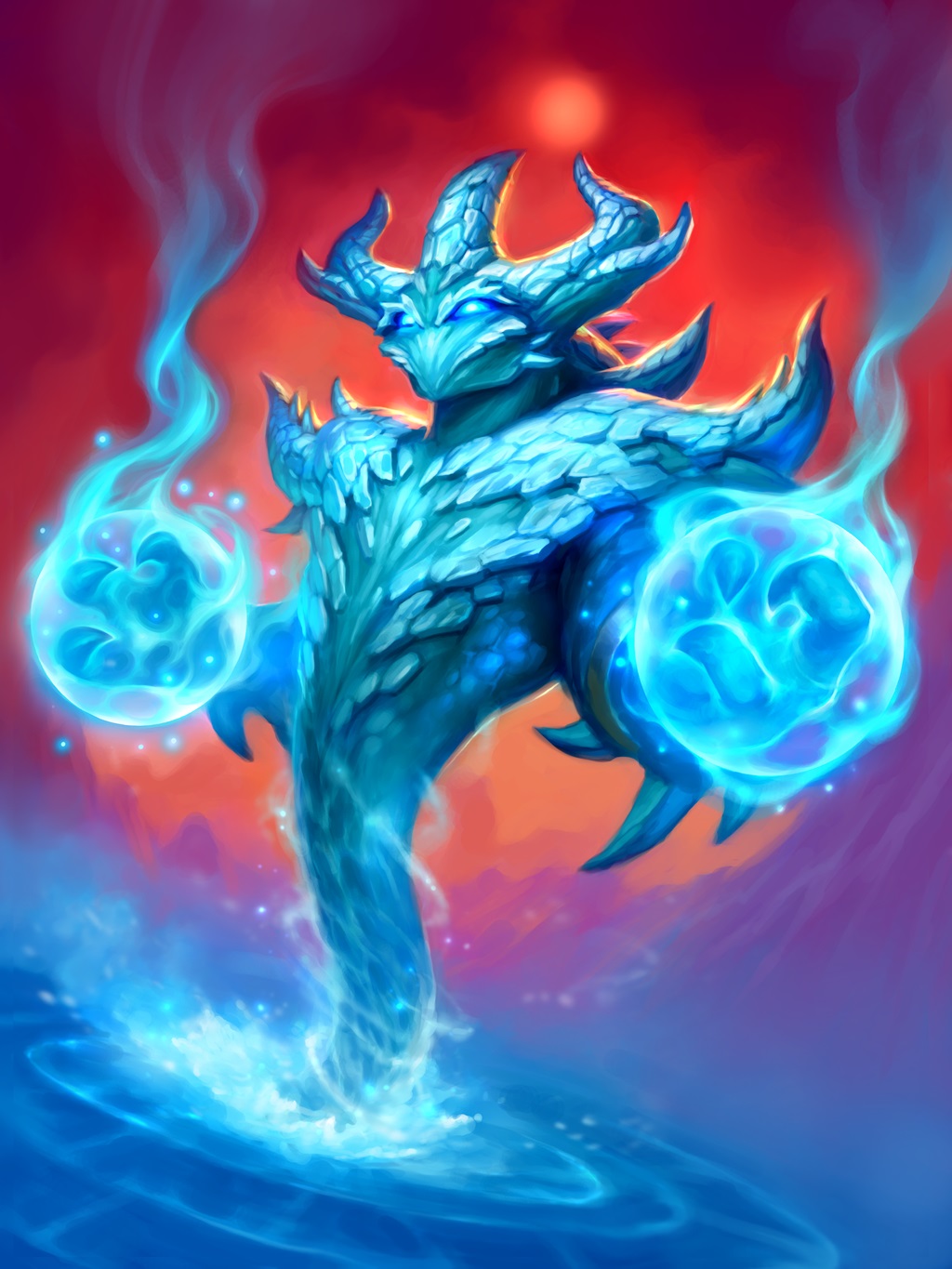
Before reading this guide, I’d like to remind everyone that this is a difficult deck and probably isn’t for newer players. This deck is for players who enjoy a challenge or have some extra dust and want to try something new. It’s exciting to play because sometimes it feels like you just hit the lottery. I actually prefer decks with lots of randomly generated effects, so I naturally enjoy playing this style of deck because every game is different.
On the other hand, this deck is quite different from the traditional Cyclone Mage – It completely scraps board freezes and instead prefers some early elemental units. It’s not very strong early, but then again, most decks in this meta are on the slower end besides Warrior and Hunter.
February 8th, I began recording the stats of my version of “Elemental Cyclone Mage” or “Elemental Miracle Mage”, and after over 600 matches with it (mostly in top 100 Legend) my win-loss ratio is sitting at 57.3%. That ratio is pretty good considering my rank and number of matches played. My analysis is that this deck is especially strong against Druid, Rogue, and Warrior, because these decks both lack early tempo and also lack AoE clears. Our Mage deck has so many different threats and other variables that we can make ourselves invincible against those decks, which is perfect for the current meta.


Decklist

AAECAaXDAwSWmgP8owOEpwP4rAMN5gThB87vAsiHA4OWA5+bA+KbA/+dA/usA/2sA/OvA4e2A4i2AwA=
General Tips
At its core, this is a board-flood deck. Using specific combos, we can cheat out big units that our opponent can’t readily deal with in order to win us the game.
- Example 1: On Coin – Turn 3 play an elemental, turn 4 Elemental Evocation + Coin + Animated Avalanche. That’s 2 7-mana 7/6’s on turn 4, so your opponent often loses on the spot.
- Example 2: In the early game, you can use a bunch of randomly generated spells to reduce the cost of your Mana Giants, and then Mana Giant + Conjurer’s Calling.
- Example 3: Chenvaala + Sorcerer’s Apprentice with some spells can take board back while also developing a strong board of your own.
This deck is built around drawing cards, which also means that you’re more likely to draw into what you need.
- Example 1: When you activate your Sidequest from playing your second elemental, there’s a high chance of drawing into Conjurer’s Calling. If you already have a big unit on board, that’s a reliable way to find your Conjurer’s Calling for it.
- Example 2: If your opening mulligan has lots of spells, and one of them is Book of Specters, you can keep all of them in your starting hand because it increases the probability of drawing into 2 or 3 units with your Book of Specters.
This deck has a lot of RNG factors, but you can control it to an extent. Take these possibilities into account:
- Example 1: There is a high probability of transforming your 8-cost Mana Giant into a unit with Charge, Taunt, Rush, or Lifesteal when you use Conjurer’s Calling on it, so if you need one of those card texts then consider that method of finding them.
- Example 2: You can play Conjurer’s Calling in a few creative ways: To get through your opponent’s taunt unit, or to try to turn your opponent’s 1-mana minion into a Depth Charge or a 2-mana minion into a Doomsayer. Sometimes it won’t go your way, but don’t give up – There are lots of ways to win with this deck, and although plays like this are a bit risky, the payoff can be great. You only need to catch one break.
- Example 3: On Coin – If you play Book of Specters on turn 2 and draw 3 units, then you can play a Mountain Giant the next turn. This is a perfect example of a low risk, high reward play, because if you don’t draw 3 cards then it won’t affect you that much, but if you do happen to draw all 3 then an 8/8 on turn 3 is often a game-winning play.
This is a tempo deck that requires you to be proficient with your mana:
- Example 1: Book of Specters can be used to reduce the mana cost of Mountain Giant. When you have lots of cards in hand, you can first use Elemental Evocation, then use Book to try to draw 3, potentially providing you with a 1-mana Mountain Giant.
- Example 2: You don’t want to confuse the cards already in your deck with randomly generated cards because they influence Mana Giant’s cost. I recommend using 2 regular Mana Cyclones in an all-gold deck or vice versa, so that you can keep them separate this way.
- Example 3: Deciding how to use Twinspell cards is important – When you need to decrease the cost of Mountain Giant, you only use the first copy (eg if you have two Conjurer’s Callings you use the first copy of both rather than both copies of one), but when you want to play a Mana Giant then use both copies of a Twinspell card because the second copy will reduce its cost.
In saying all of this, I want to show that this deck has a lot of details and requires high proficiency. Having enough experience against a range of matchups is a must. It also takes a lot of experience to understand how to use the early game to win difficult matchups.
Card Analysis
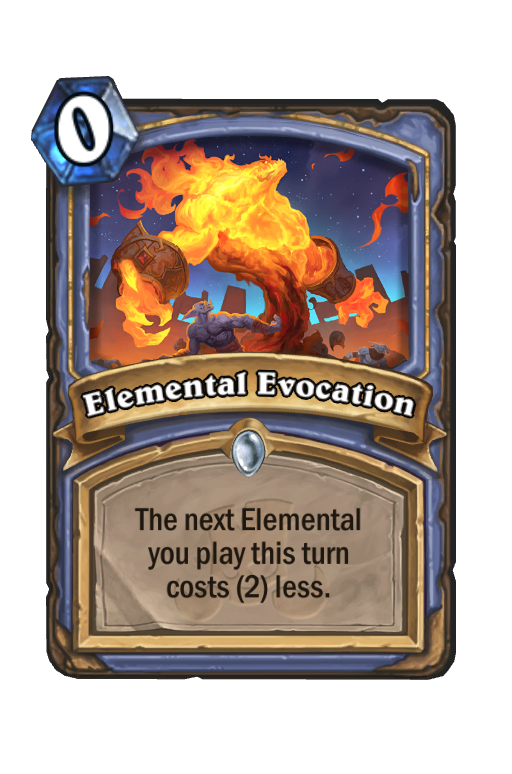
Elemental Evocation: It might not seem like much at first glance, but this card is absolutely required in this deck. This version of Mage has 15 elemental units, and many of them are quite expensive. It smooths out the deck’s curve, and it is extremely useful in getting Animated Avalanches out more quickly.
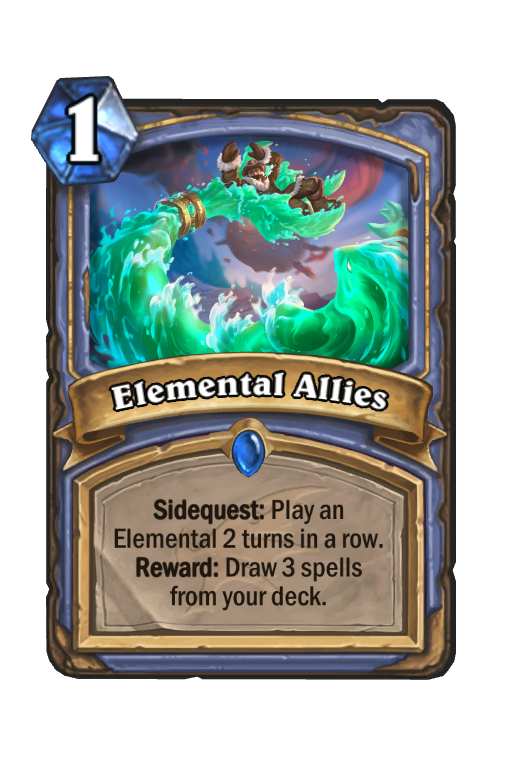
|
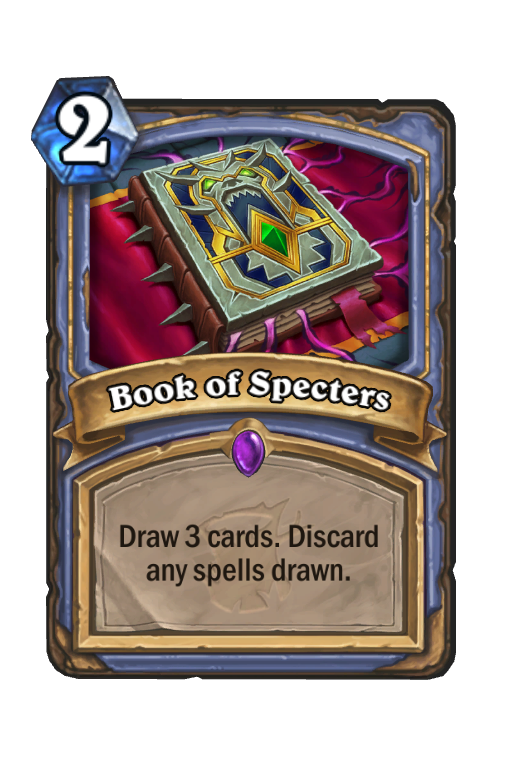
|
Elemental Allies and Book of Specters: With the two put together, one draws 3 spells, and the other 3 units. They are both extremely powerful cards alone, but their worth as a combo is greater than the sum of its parts: After you complete the Sidequest, you’ve then drawn a majority of the spells in your deck, so Book of Specters will be much more consistent in drawing you 2 to 3 cards afterwards.
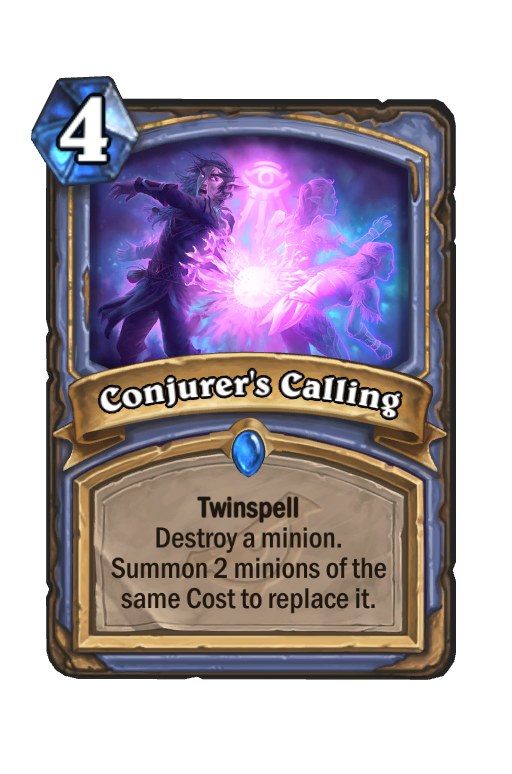
Conjurer’s Calling: This card is the reason we play the deck as we do: Use high cost units to value trade and then Conjurer’s Calling them, amassing great value out of your units. It can also be used as a general removal card, it can deal with Edwin, it can ruin your opponent’s Magnetized units when the base Mech’s cost is low, and it can even be used to get through taunts when you have lethal.
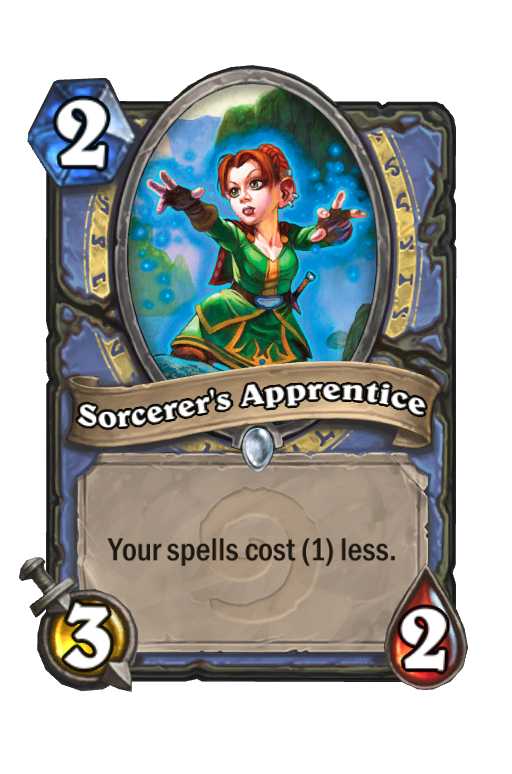
Sorcerer’s Apprentice: This card is the key to taking the board back. It’s often paired with Mana Cyclone to produce a bunch of spells or with Chenvaala to make a 5/5. Otherwise, it can be used with low cost spells to clean your hand up, since your hand is often full with this deck, and you don’t want to overdraw when you complete your Sidequest etc. This reduces Mana Giant’s cost at the same time.

|
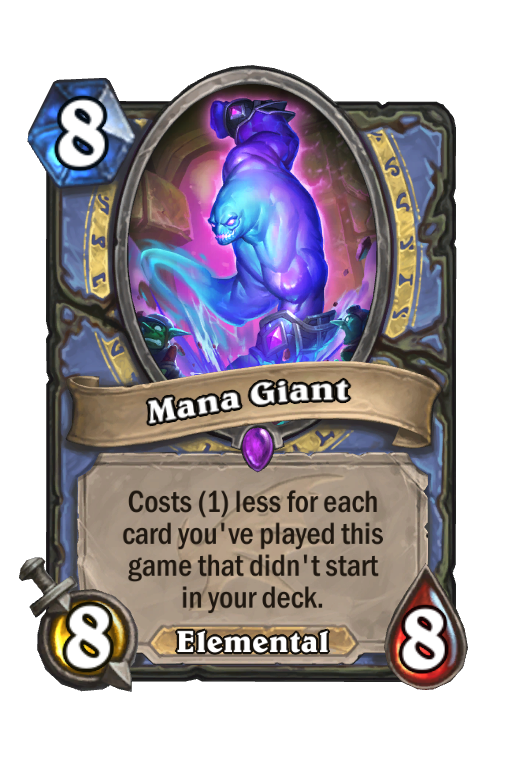
|

|
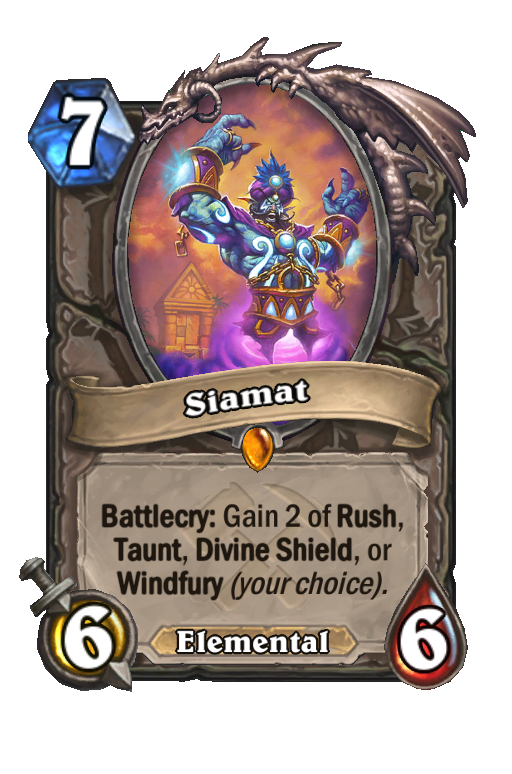
|
Big units: There are seven of these: 2 Animated Avalanche, 2 Mana Giant, 2 Mountain Giant, and Siamat. They seem expensive at first glance, but we have many ways to reduce their costs. They can be played on their own early on for a huge tempo boost, or later with Khadgar to make a massive board.
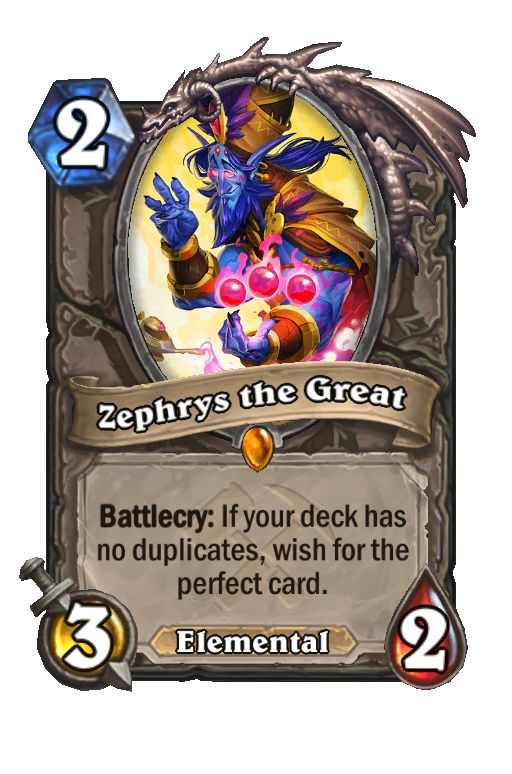
Zephrys: You draw through your cards quite quickly with this deck, so it can normally be saved until you can activate its Battlecry. Once you can do so, you absolutely want to be looking for lethal opportunities, because all it takes is one 8/8 sticking to the board for one turn and you can Zeph into Windfury for 16 damage. Even if you can’t activate its Battlecry, it can be useful in completing your Sidequest early.
Mulligans
Without Coin: There are 3 cards that you absolutely keep: Elemental Allies, Book of Specters, and Mana Cyclone. These 3 are card generators, and since our hand is worse off without Coin, we need to try to find card draw and resources. When you have the Sidequest, you can keep Elemental Evocation and Elemental units, since making expensive Elementals cost 2 less to play helps you complete your Sidequest faster. If you have Mana Cyclone, then you can keep Sorcerer’s Apprentice.
With Coin: Elemental Allies, Book of Specters, Mana Cyclone, Elemental Evocation, and Chenvaala are all keeps. Chenvaala is especially strong early, and with Sorcerer’s Apprentice it can make one or two 5/5s easily. If you have Elemental Evocation, you can also keep Animated Avalanche so that you can play two 7/6s for 4 mana and lock in a win most of the time. If you have Book of Specters, then keep Mountain Giant so that you can go for a turn 2 Book into turn 3 Giant if you get lucky and draw 3 units. If you have Mana Cyclone or Chenvaala, you can also keep Sorcerer’s Apprentice.
Matchup Analysis
Hunter

30-70 matchup. You can also keep Arcane Amplifier in the mulligan to deal with hunter’s many 3-health units. On coin you can keep Magic Trick and try to find removal with it.
Hunter is great at hitting face, and it’s also difficult to determine exactly which version of Hunter you’re playing against. Regardless, the key to beating Hunter is playing the health totals of both sides.
In the early game, you need to keep up on board while also using removal on some of your opponent’s units in the process. In the mid game, the focus is on stabilizing your health – Don’t let them get a single point of free damage on your face. You need to defend against possible lethal outs from your opponent while finding a way to set up your own lethal. You need to protect yourself while also threatening your opponent, which means splitting between getting damage on your opponent and preventing their lethal outs, not going all-in on one or the other.
Rogue

60-40 matchup, default mulligans.
Rogue is the most popular deck on ladder, but our deck is at an advantage against it because Rogue doesn’t have much impactful AoE removal and doesn’t put out much pressure early.
Turns 1 through 3 are weak for rogue as they don’t put much pressure on the board. In the mid game they will be setting up Galakrond with Invoke cards, giving you even more time. The brunt of the pressure comes later in the game, which means we can be greedier with our mulligan. Focus on one of the two primary objectives in this matchup: Either complete your Sidequest or quickly flood the board with strong units.
For the first few turns, both sides are basically tickling each other, but then our deck starts to ramp up the pressure with a stream of powerful units. Most of the time Rogues don’t have many ways to deal with our units, so we win by sticking a couple big guys. If it goes later, be wary of your health total and your opponent’s lethal outs – Once you’re under 18 health, you’re starting to enter the danger zone.
Flikk is another important part of the matchup. When it comes out you need to immediately kill it. If you can play Animated Avalanche early then play it – Holding onto it only makes it more likely for him to have Flikk. If possible, use Conjurer’s Calling on Mana Giant the same turn you play it, because if it gets Flikk’d it will be painful. With Mountain Giants, however, you’d rather not use Conjurer’s Calling on it unless Flikk has already been used because there are only two 12-mana units and if Conjurer’s Calling gives you duplicate units then it makes their Flikk get even more value.
Warrior

60-40 matchup, typically Galakrond Warrior. Keep Arcane Amplifier for a clean clear on their Bomb Wrangler.
Warrior does not present as much face pressure as Hunter. They don’t have clean ways to deal with our big units because their removal is mostly for smaller, token-y boards, so we’re at an advantage.
Most of Warrior’s damage can’t go through taunts, so you should save any potential taunts to use at key moments, don’t just throw them out there.
Druid

80-20 matchup, stick with the usual mulligans.
Druid is our best target as Mage, because Druid has almost no early game pressure. Druid can’t deal with wave after wave of threats, which is exactly what Mage sends out in the mid game. They don’t have any units as large as our Giants, so we can usually value trade their units and then Conjurer’s Calling our own, and Druid can’t do much about it.
Be a little greedier in the mulligan against Druid, keeping Mountain Giant on Coin is fine for example, as is keeping Conjurer’s Calling. Stay at a strong pace and you should be fine.
Mage

60-40 matchup, default mulligans. They are usually playing Highlander.
Highlander Mage puts out few threats early. Playing against this type of deck isn’t especially difficult, but its AoE removal options are all extremely strong, and it can clear any board state.
Fortunately, Highlander Mage’s card draw is relatively weak, so if their natural draw isn’t very strong then it can be game ending for them. Against Mage you need to manage your resources carefully – Don’t just throw everything down at once. Instead, send them out in waves.
The late game will end up in a deadlock, at which point a Zephrys lethal will likely be the best way for either side to win.
Others
Against the other classes, I haven’t encountered them very much, so I can’t suggest too much. Playing at your normal tempo should be fine (Complete the Sidequest/use Conjurer’s Callings to cheat out value/expand your board).
Final Thoughts
Because of all of the possible permutations that can happen each game with such a deck, there’s no way to explain every single detail, so you are all more than welcome to come discuss the deck with me, I will answer everything to the best of my ability.